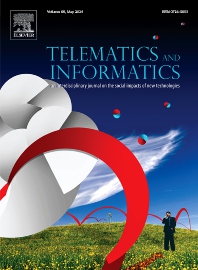Journals in Computer science
Journals in Computer science
The Computing collection presents a range of foundational and applied content across computer and data science, including fields such as Artificial Intelligence; Computational Modelling; Computer Networks, Computer Organization & Architecture, Computer Vision & Pattern Recognition, Data Management; Embedded Systems & Computer Engineering; HCI/User Interface Design; Information Security; Machine Learning; Network Security; Software Engineering.
- ISSN: 0165-1684
Signal Processing

- ISSN: 0923-5965
Signal Processing: Image Communication

- ISSN: 1569-190X
Simulation Modelling Practice and Theory

- ISSN: 2352-6483
Smart Health

- ISSN: 0167-6393
Speech Communication

- ISSN: 2210-5379
Sustainable Computing: Informatics and Systems

- ISSN: 2210-6502
Swarm and Evolutionary Computation

- ISSN: 2666-2221
Systems and Soft Computing

- ISSN: 0736-5853
Telematics and Informatics

- ISSN: 0304-3975
Theoretical Computer Science
